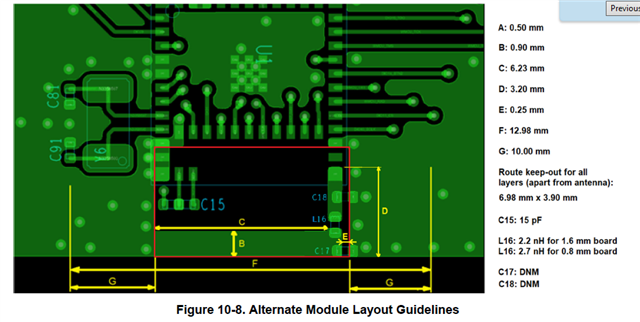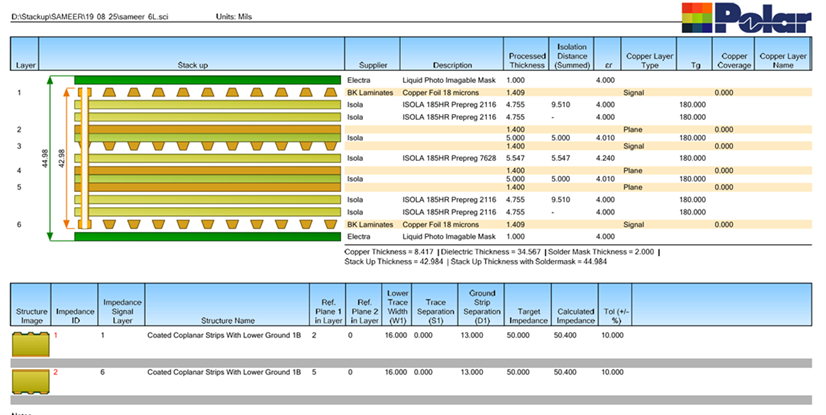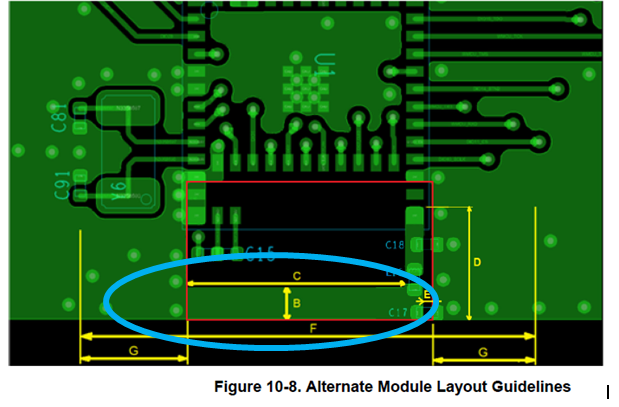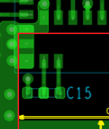Tool/software:
We use the layout guidelines mentioned in the device datasheet. some are reproduced here

For our layer stackup, the 50 ohm track width is 0.406 mm(16 mils), Whether the above dimension A through
G willm change accordingly, if so what is the values for A through G
thanks




